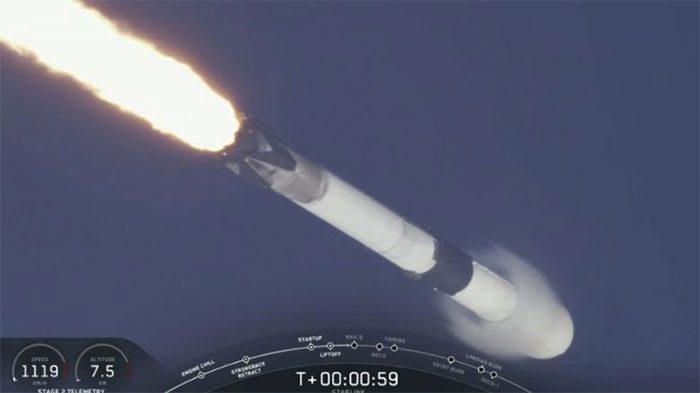On May 8, NASA successfully launched two small satellites to monitor hurricanes in real-time from a base in New Zealand.
This activity is part of the TROPICS mission, aimed at improving the ability to forecast large, destructive storms.

SpaceX’s Falcon 9 rocket carrying Starlink satellites was launched from Cape Canaveral Air Force Station in Florida, USA on January 29, 2020. (Archive photo: AFP/TTXVN)
Specifically, the two satellites were placed into orbit by a rocket from Rocket Lab (USA).
At a press conference regarding the first launch of the TROPICS mission, NASA scientist Will McCarty stated that thanks to these monitoring devices, researchers would be able to track the formation and activity of storms in the Pacific hourly, as opposed to the current satellites that provide updates every six hours.
Moreover, the information collected about rainfall, temperature, and humidity can help scientists more accurately determine the intensity and location of storms making landfall, thereby assisting coastal residents in preparing for storm prevention and emergency evacuation.
NASA program executive Ben Kim noted that many organizations, such as the National Hurricane Center, the Storm Prediction Center, and several other agencies, are ready to receive valuable imagery. In the long term, a better understanding of storm formation and development will enhance climate models for the future.
The second spacecraft built by Rocket Lab is expected to launch an additional two satellites into orbit within the next two weeks, creating a cluster of four hurricane-monitoring satellites. Originally, this satellite cluster was planned to consist of six satellites instead of four. However, last year, NASA experienced a failure in the launch of the first two satellites after the US Astra rocket encountered issues shortly after takeoff.
Scientists warn that storms are becoming more intense as ocean surface temperatures rise. Last year, Hurricane Ian claimed the lives of dozens of people, devastated the state of Florida (USA), and caused economic damages exceeding $100 billion. This was also the most devastating natural disaster worldwide in 2022.


















































